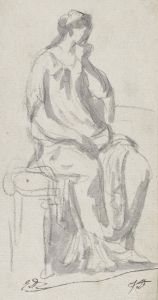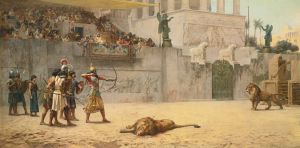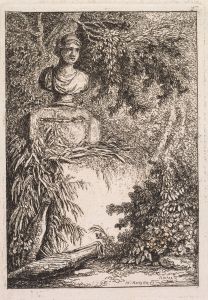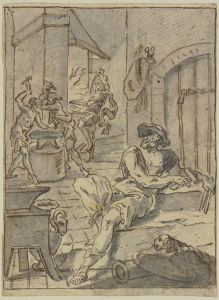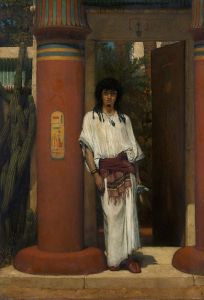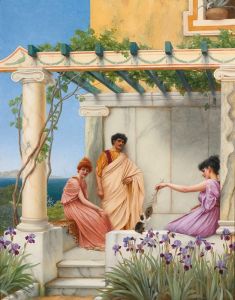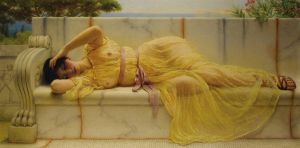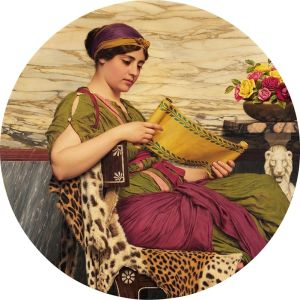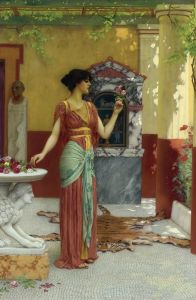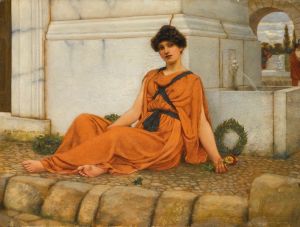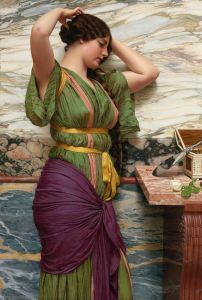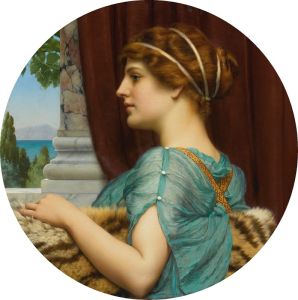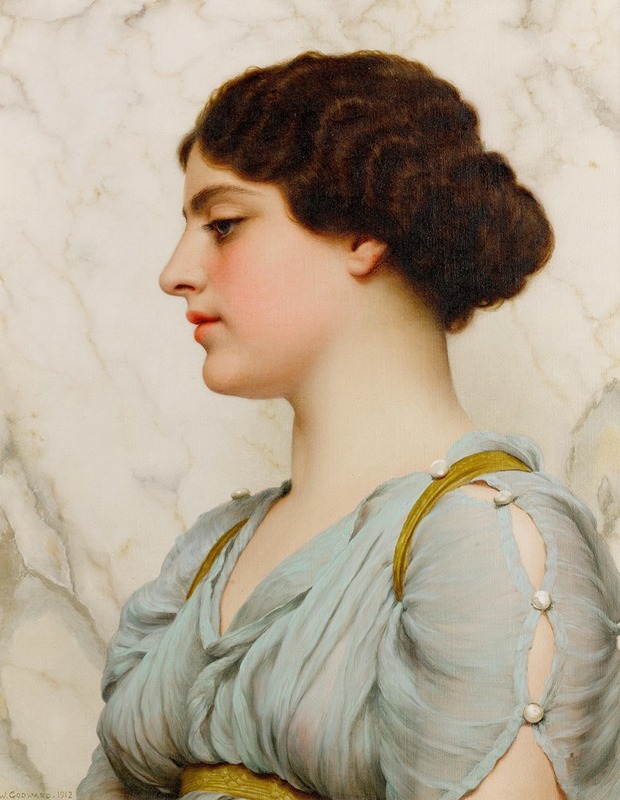
A Roman beauty
A hand-painted replica of John William Godward’s masterpiece A Roman beauty, meticulously crafted by professional artists to capture the true essence of the original. Each piece is created with museum-quality canvas and rare mineral pigments, carefully painted by experienced artists with delicate brushstrokes and rich, layered colors to perfectly recreate the texture of the original artwork. Unlike machine-printed reproductions, this hand-painted version brings the painting to life, infused with the artist’s emotions and skill in every stroke. Whether for personal collection or home decoration, it instantly elevates the artistic atmosphere of any space.
"A Roman Beauty" is a painting by the British artist John William Godward, who was known for his neoclassical style and depictions of women in classical settings. Godward was part of the late 19th and early 20th-century art movement that sought to revive the classical ideals of beauty and form, often drawing inspiration from ancient Rome and Greece.
John William Godward was born on August 9, 1861, in Wimbledon, London. He was a protégé of Sir Lawrence Alma-Tadema, another prominent artist of the classical revival. Godward's works are characterized by their meticulous attention to detail, vibrant colors, and the serene beauty of his subjects. His paintings often feature women in classical dress, set against backgrounds of marble and lush landscapes, which were typical of the neoclassical genre.
"A Roman Beauty" exemplifies Godward's style, showcasing his skill in rendering textures and fabrics with precision. The painting depicts a young woman in Roman attire, embodying the idealized beauty that Godward often sought to capture. The subject is typically portrayed with a serene expression, emphasizing the tranquility and grace associated with classical beauty.
Godward's work was heavily influenced by the classical art and architecture he admired, and he often incorporated elements such as marble columns, intricate mosaics, and lush gardens into his compositions. These elements not only provided a historical context but also allowed Godward to explore the interplay of light and shadow, enhancing the three-dimensionality of his figures.
The artist's attention to detail extended to his portrayal of clothing and accessories. In "A Roman Beauty," the drapery of the woman's garment is rendered with exquisite detail, showcasing Godward's ability to depict the texture and weight of fabric. This focus on detail is a hallmark of Godward's work and contributes to the lifelike quality of his paintings.
Godward's career was marked by both success and challenges. While he enjoyed popularity during his lifetime, the rise of modern art movements such as Impressionism and Cubism led to a decline in interest in classical themes. Despite this, Godward remained committed to his style, continuing to produce works that celebrated the beauty of the classical world.
Tragically, Godward's life ended in suicide in 1922, reportedly due to his disillusionment with the changing art world and personal struggles. His work, however, has experienced a resurgence of interest in recent years, with art collectors and historians recognizing the technical skill and aesthetic appeal of his paintings.
Today, "A Roman Beauty" and other works by Godward are appreciated for their contribution to the neoclassical movement and their celebration of timeless beauty. His paintings are held in various private collections and museums, where they continue to captivate audiences with their elegance and attention to detail.





